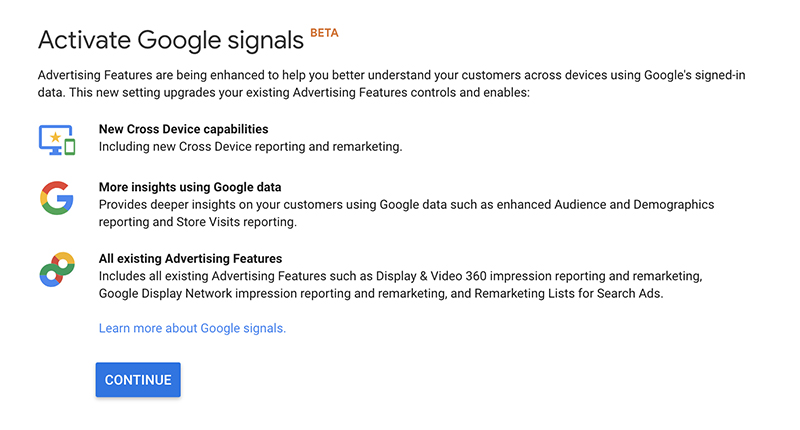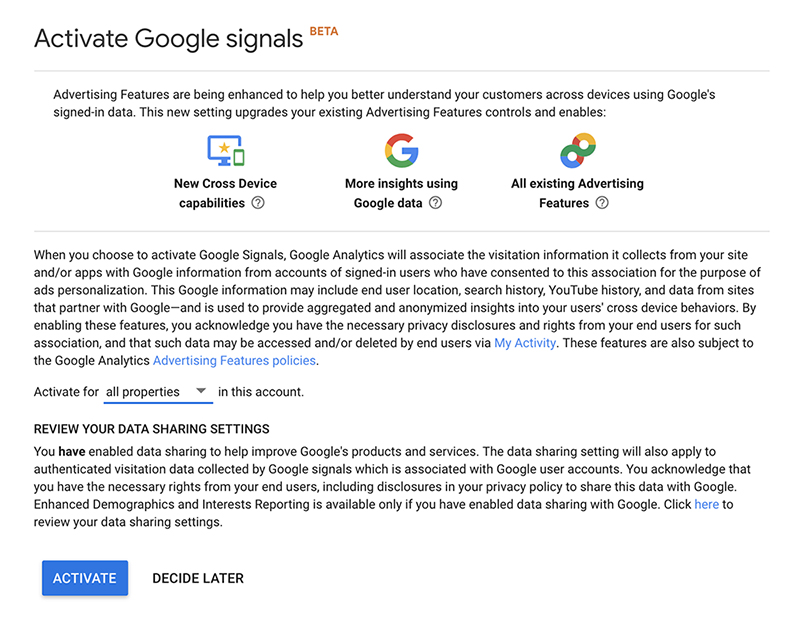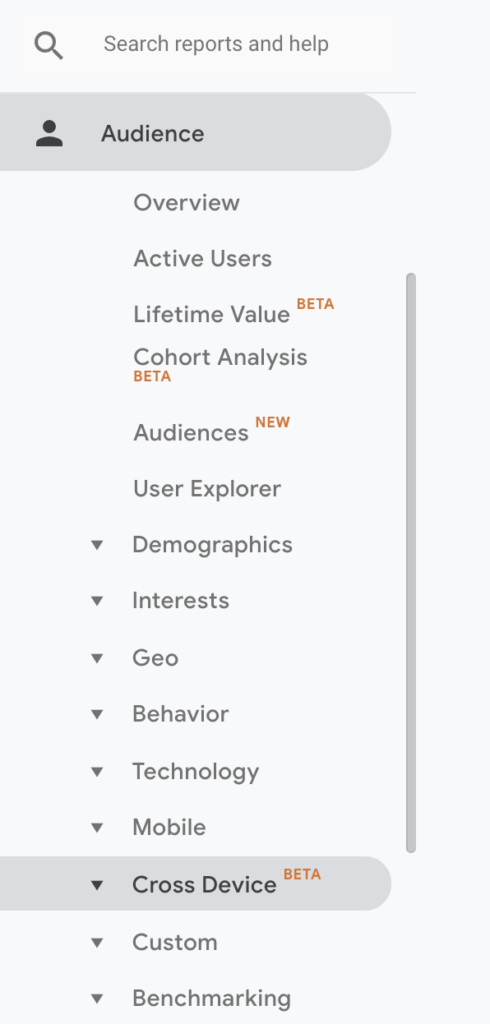The power of cross-device analytics
Understanding which online channels our web visitors come from is an integral part of our job as marketers. Layer on top of this, which devices they are using, and the picture becomes that much clearer. But how can we tell if the same user visited our website on a mobile phone and then later came back on desktop or tablet? We can’t assume our visitors use only one device, can we?
Today’s stats on device ownership in US households go something like this (Pew Research Center):
- 90% of U.S. households contain at least one mobile phone, tablet or laptop
- The median U.S. household contains 5 of them
- 18% of U.S.households are “hyper-connected” with 10 or more of these devices
People aren’t tied to one device, but rather flit from one device to another, often revisiting the same websites as they do so.
To understand what our audience’s behavioral patterns are in regards to this multi-device activity, we can use cross-device tracking.
Google Signals
If you use Google Analytics, you’re in luck as they recently introduced this as a new beta feature under “Google Signals”.
Here’s how to switch it on:

You should see the above call-out in your GA dashboard. Click “Get Started”.
It will then prompt you to Activate Google Signals. Hit Continue.

Then select which GA properties you would like to activate Google Signals on and click the Activate button.

Now, when you look at your toolbar, under Audience, you’ll see “Cross device”.

Clicking on that option will show you:
Device Overlap
Which of the same users visited your website on which devices.
Device Paths
The most common device paths they took. For example, first visit on mobile, then next visit on desktop and final visit on mobile again.
Channels
Which channels these users came from. Combining this with the device data, we’re really able to get insights into omnichannel behavior!
Acquisition Device
Which device users first used to visit the website.
Some caveats
- It will take some time for your data to start building up after you have activated Google Signals
- This a Beta release and we should expect tweaks and improvements in the weeks and months to come
- The data is collected from users who are logged in to their Google accounts and who have Ad Personalization switched on
This added functionality empowers us to get a clearer picture of how our visitors are engaging and converting across different devices. Armed with this knowledge, we can better optimize our marketing campaigns.
Example 1:
If we want to create a remarketing campaign that targets people who have visited our website 3 or more times, we now have a more accurate view of that segment – someone may visit our site 3 times; once on mobile, once on desktop, once on tablet. Without cross-device tracking, these 3 visits would be seen as 3 separate people.
Example 2:
If we notice that a large segment of our first-time visitors are through mobile and then later convert on desktop, we may decide to allocate more of our marketing budget to mobile ad campaigns for awareness. Or, depending on our product, we may want to improve the mobile experience to make it more conducive to driving conversions.
There are so many other ways that cross-device tracking can help us to fine-tune the customer experience and reach that ‘Holy Grail’ state of true omnichannel marketing.
I’d love to hear about your use cases!
